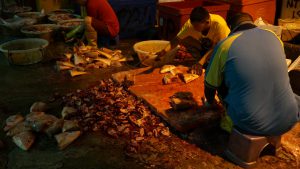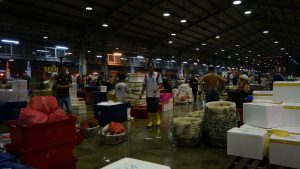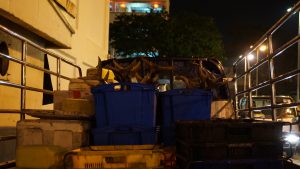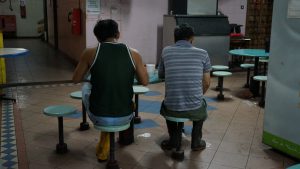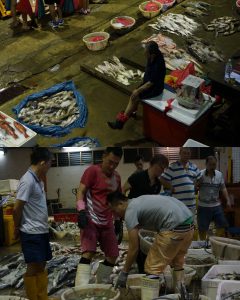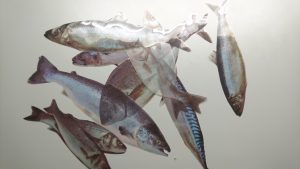HELLOOO. Welcome to the first 4D project of this semester! This project is about exploring about what is Singapore to me? How well do I understand it? What is the way of life here in Singapore?
For task 1: we were suppose to choose between four approaches on the ‘theme’ that we were going for. They include:
1) Have a conversation with someone random and find out about their lifestyle in Singapore.
2) Visit a place that you are unfamiliar with or haven’t been to for awhile.
3) Visit a place during a different time of the day.
4) Have a conversation with a family member and find out about possible traditions/life stories/experience about Singapore.
I immediately decided to do no. 2 with those three questions that I had in mind. This is because I was always complaining to my family and friends that Singapore is too small and there is nothing left to explore. I thought I knew Singapore well enough. Which was why I wanted to challenge myself to discover new places of Singapore!
To be honest, my game plan was basically googling “interesting place to visit in Singapore”… BUT HEY, there were places that caught my eye and I was really amazed that such sites exists in Singapore. However, when I saw ‘Jurong Fishery Port‘, I knew it was the right place to go!
I’ve always enjoyed visiting markets in other countries, so I was excited to know that I can see fresh produce up close in Singapore! The fact that not many people would frequent that area makes me even more hyped to visit as both the audience and I will be on a learning journey together to find out this place! yay!
Research:
I made a total of two recce trips – 15 Jan and 21 Jan 2017.
It was truly a whole new world to me!!! Even just entering the port’s gantry, you are required to submit your IC to attain a pass. Once my mum and I stepped into the ‘market’ area, we were very much overwhelmed with our senses. There was so many things going on at the same time: selling of seafood, pushing of carts, cleaning of the fishes’ guts, etc. The smell aspect and sound aspects were definitely there as well: grimy smell of the ocean and voices yelling over each other.
Here are some of the photos that I got from my first trip:

(gantry gate)
(cleaning the fishes)


(bustling with activities!)






(display of seafood: they are either displayed on the floor (whole fishes) or put in baskets/styrofoam boxes)
(push carts: they go around helping to transport the fishes around the market)
(the ‘accountants’: in charge of calculating their daily business. and oops, got caught red-handed hahaha)


(objects used in the market)
(cute friendly uncles!)
(packing fishes to be sent for delivery/selling)

(an uncle scooping ice to keep the fishes fresh)
(venue name + pretty looking containers)
I think I had a pretty fulfilling first trip as I managed to capture many moments, showing a sufficient preview of what the fishery port is about. Although it was late in the night at 3-4 am, the energy of the port was high with bustling activities! While everyone is sleeping, these uncles and aunties were working, ensuring that we get our fresh seafood produce at our nearby markets! The overall atmosphere was also really different unlike our neighbourhood’s wet markets.
However, Michael mentioned that these are just photos and anywhere else can be ‘interesting’ and ‘a whole new world’ experience as well. What makes this fishery port so unique? Hence I decided to go back for a second time to interview different people (of different roles) to understand more about their way of life.
Unfortunately, on the day that I went back, it was two more days before Chinese New Year and the place was PACKED. Everyone was really busy and they either had no time to accept my interview, or because their boss was supervising and they could only focus on their jobs. It was quite depressing as I got rejected by quite a lot of people and I had been walking aimlessly for more than one hour.
At first, I did managed to get one interview from an uncle in the fishery port’s market. He works as a fish shop owner at one of the wet markets in Angmokio. He was with a few other uncles at a shop stand, and waiting for the ships to unload the fishes they had caught. Basically, the shop is a distributor in name: store vendors will buy their produce from them, then selling it in their own stores. I asked about his working hours, his working experience, and opinions about supermarkets vs their wet market business, etc. His replies were how working was really tiring and that there was nothing they could do about the rising competition, especially in times of bad economy and bad produce.
AND THIS WAS WHAT I COULD ROUGHLY REMEMBER. BECAUSE MY AUDIO RECORDING GOT CUT OFF WHILE RECORDING (OH NO!!!!)
Being dejected, I went back to the coffee shop area to find my mum. (the coffee shop area is located inside the fishery port, but away from the ‘wet market’ area, it is for the people working to have meals and quick breaks) I was close to giving up on this expedition but my mum encouraged me to ask the uncles in the coffee shop instead since they are taking a break/got off work, so most probably more willing to talk to me.
With that, I approached this table of uncles and OMG I WAS SAVED.
At first they were quite uneasy about me approaching them but they were really happy to share and talk to me!!!! Especially Uncle Wang, who provided me with a lot of insights about the lives of people working in the fishing industry. He works as a facilitator at NTUC where he oversees the distribution of fishes across the island’s stores.
He explained that it is a really tiring job as they had to work in the middle of the night. It will be even harder for the store vendors as they had to carry on business in the morning/afternoon after waking up at 2/3am to get their produce. Because most of the people working are elderly, the job is really straining on their health. When I asked him if he is concerned about how the fishing industry in Singapore may possibly die out because of big corporation’s convenient supermarkets and the lack of younger people who would want to do such laborious jobs, he replied that he would not be concerned. There are always foreign workers who can help out. The only reason why Singaporeans are still continuing on the jobs is because they could not switch to other better jobs due to their low level in education.
“Everyone wants to stop doing but they can’t.”
He would rather seeing the younger generation study hard to get a good job then endure the hardships of these jobs. It struck to how I never got to understand other people’s way of life. Working is really tiring and we often take it for granted that most Singaporeans are wealthy and can afford a comfortable life, when in fact they are many out there who are struggling to get by with life.
Uncle Wang also brought me around the area and I took some pretty cool shots from the second floor of the wet market too.
(person sleeping in the car)

(ship unloading area)
(hustle bustle)
(more shot of people: I also focused on the elderly workers)
(the food court)

(BIG THANK YOU TO UNCLE WANG!!!)

(AND OF COURSE THANK YOU TOO, TO MY BEAUTIFUL MAMA WHO ACCOMPANIED ME THROUGH THE TIRING NIGHTS AND DRIVING ME TO THE FISHERY PORT)
Presentation Idea:
After learning about the fishermen’s way of life, I wanted to present on how draining their jobs are. Showing my audience a side of Singapore they are unexposed to – how there is always a flip side to everything; how everyone has differing attitude to their jobs, contrasting with those working in the Jurong Fishery Port.
I really wanted to incorporate the photographs that I took as I felt that they truly help best express what I saw and can better bring across my ideas. However, just putting up a gallery of photos will be too boring and I was quite stumped on how to present them.
After hearing Michael’s suggestion to incorporate elements of the fish market into my works, I noticed most fishes were packed in styrofoam box. This inspired me to presenting my photos in a styrofoam box, where the act of removing the lid unveils someone’s way of life in Singapore! Instead of fishes, the audience will be getting the messages that I am trying to convey through the pictures!
I picked out some of the nicer photos that reflect what I saw at the fishery port, sticking to theme of the working lifestyle of the people. Originally I wanted to individually print out each card and write a message at the back, expressing my thoughts and what I felt or learnt from the trips when I look at the photographs. However my english standard really cannot make it and it does not deliver that emotional impact of the messages that I was trying to bring across. Hence I ended up grouping two photos back and front. They were grouped based contrasting similarities.
(The ‘accountants’: one being engrossed in work vs one sitting alone and staring into space)
(Food court: crowd vs sitting alone)
(Fish sellers: waiting for business vs busy with customers’ orders)
(Cheerful, hanging out with friends vs Tired, waiting for friend)
(Cleaners: Local vs Foreigners)
(Delivery men: pushing vs pulling)

(the two uncles that helped me a lot)
As you can see, the photos were meant to show how even in similar context of setting or action, there are two sides to it (other than the last one featuring the two uncles. but they really helped me out a lot and I wanted to somehow include them. I guess they did helped in in their own but different ways though)
Through this, it invokes the message of how in a similar context of in the middle of the night, while a part of Singapore is sleeping comfortably, another side is working tirelessly. While the young have the chance to strive and get good well-paying jobs, the older generation are struggling to stay in their limited jobs.
I laminated the photos so that water would not seem in and ruin the photos since I printed them on paper.
I also printed some random fishes transparencies and mixed it with the photos while being covered in ice. This is to stimulate the real life experience of buying fishes in a boxes and makes it more relevant to the theme, as just putting photos may be too plain.
Here’s what the box look like on the inside!



Also, I pasted the top of styrofoam box lid with the aerial view of fishes, so that it looks like the audience are peering into the world of the fishery port itself.

I also played a recording that I made of the fishery port while presenting my piece, as I wanted to stimulate the actual site setting.
It was fun watching my classmates interact with this piece! I didn’t expect that so many people would get involved hahaha.
Check out the photos and videos!
I really appreciate the class feedback and how accepting they were of my concept. At first they did not quite get it, and it was even more troubling when the lamination fell off and the photos were printed too darkly, making it hard to see. They also brought up the problem of recreating this work elsewhere as it would be hard to make it a permanent piece with the addition of the ice cubes. It was really neat when they suggested that I could put the photos in frozen blocks of ice as well since one of the message that I mentioned was how the people working at the fishery port are trapped in their jobs, improving my installation piece.
Reflection:
I had fun doing something I had never done before, creating an interactive installation piece, and addressing ‘serious’ social problems into my works. I’m glad I experimented with something different. Even for the choice of location, I’m also glad that I picked somewhere that was wayyy out of my comfort zone. Through this project, I hoped that I showed my peers new places in Singapore to venture upon and expose them to another unfamiliar lifestyle! (:


